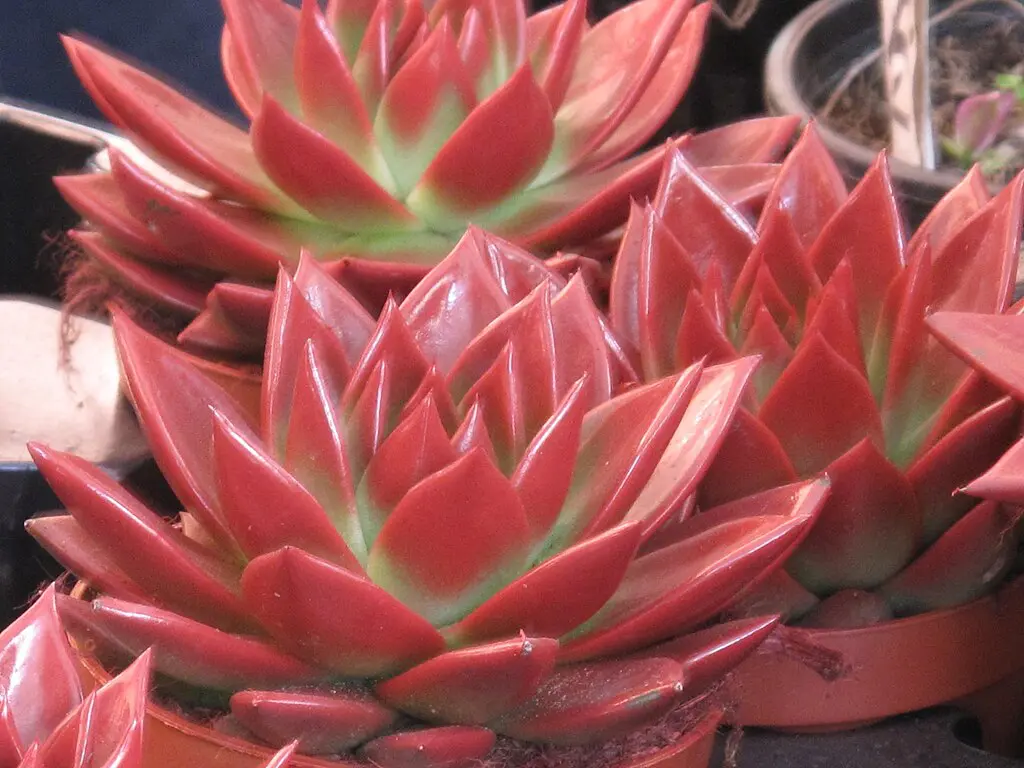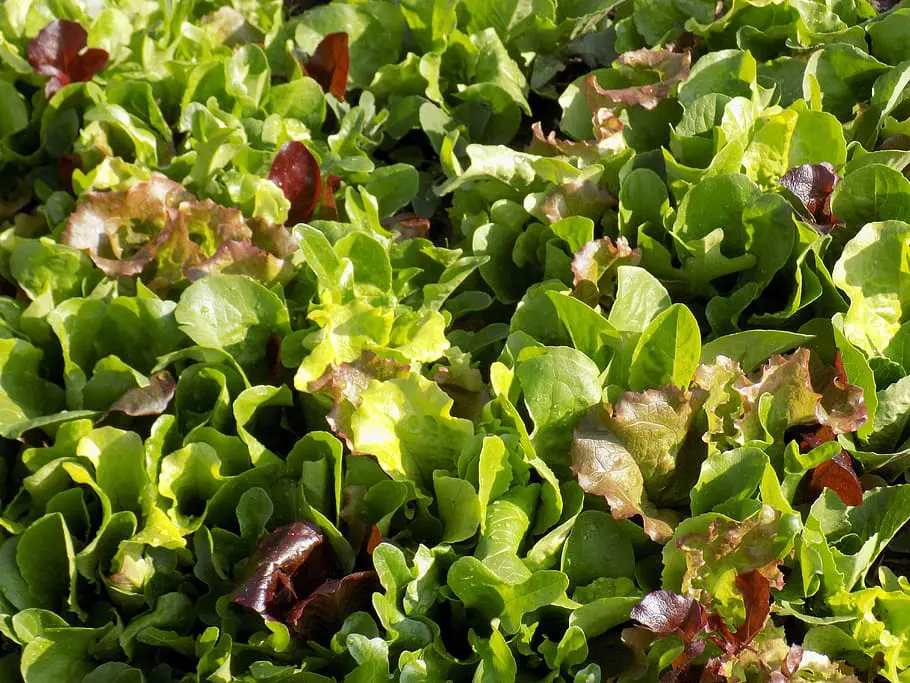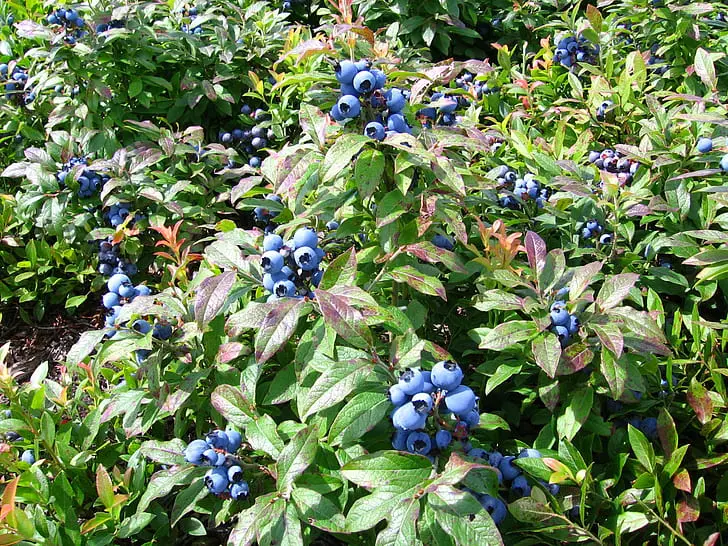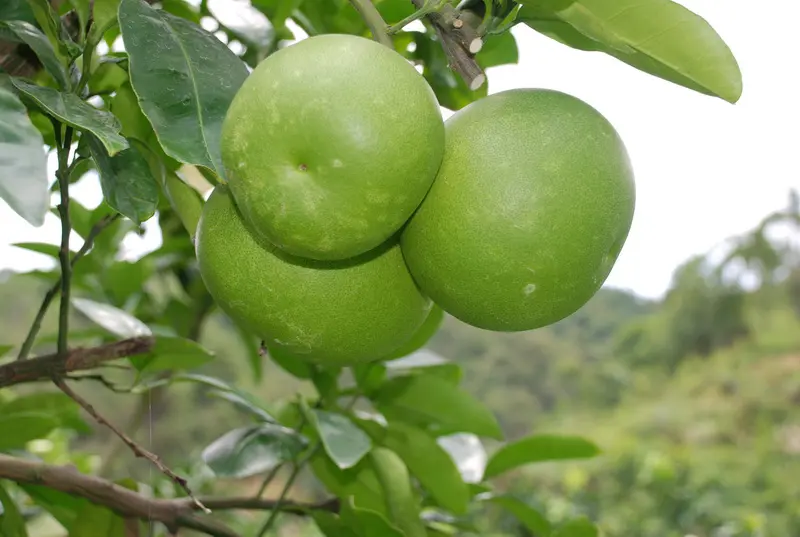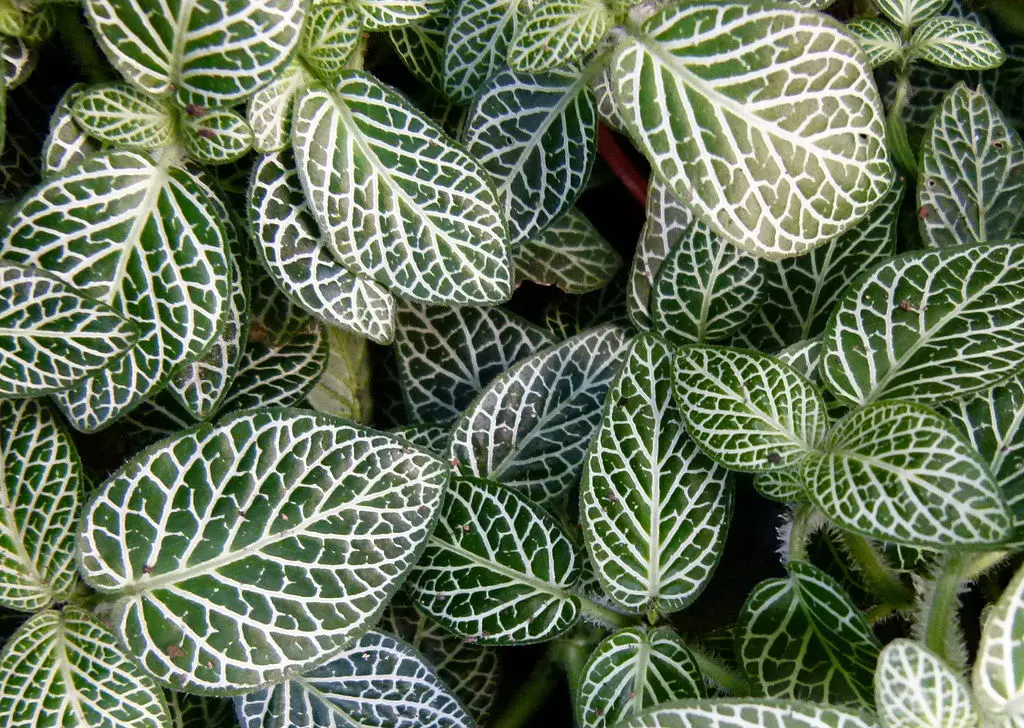This post contains affiliate links. If you buy something from one of our links we may earn a commission. Thanks
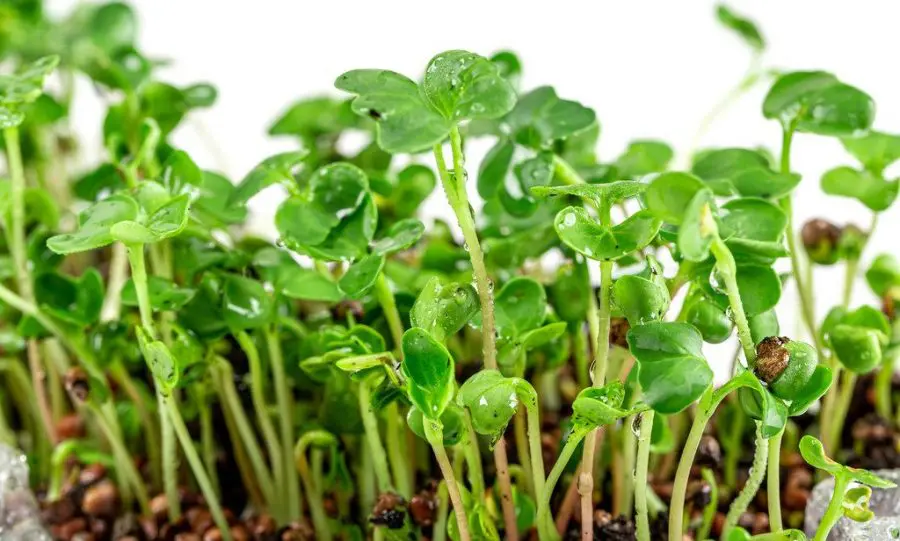
Can You Eat Microgreens Every Day? Dive in to discover the tasty truth behind these vibrant little greens and how they fit into your daily meals.
Eating microgreens is a nutritious way to enhance your diet. These young plants are rich in vitamins and minerals. Add them to salads, sandwiches, or as a garnish on soups and entrees. They offer a burst of flavor and color, and can easily be grown at home or purchased from stores. Always wash them before consumption.
So, you’ve taken a fancy to those vibrant little greens, haven’t you? I mean, who wouldn’t?
They add a punch of flavor to just about any dish. But here comes the big question: can you eat microgreens every day?
Let’s dive deep into this leafy conundrum and see what the world of greens has in store for us!
Can You Eat Microgreens Every Day?
You can eat microgreens every day as they are packed with essential nutrients and vitamins. Including them in daily meals can boost overall health. However, it’s essential to maintain a balanced diet and ensure variety, incorporating other fruits and vegetables too, to receive a full spectrum of nutrients.
Got a soft spot for those tiny, colorful greens adorning your salads and sandwiches? Yep, we’re talking about microgreens!
But, can you eat microgreens every day? That’s a leafy riddle many are curious about.
In this post, we’ll unwrap the goodness of these miniature wonders, delve into their nutritional magic, and explore just how often you can sprinkle them onto your plate. Let’s get green!
A brief definition of microgreens
Ah, let’s kick things off with a mini-lesson, shall we? Microgreens. They sound tiny, right? Well, that’s because they are!
Microgreens are the baby versions of plants like herbs and vegetables.
Picture this: They’re a bit older than sprouts but haven’t matured to full-grown plants yet.
It’s like they’re in their fun-loving teenage phase, packed with energy (in this case, nutrients) and bursting with vibrant colors and flavors.
Popularity and rise of microgreens in modern cuisine
Now, onto their stardom in the culinary world! Back in the day, microgreens were the unsung heroes, often lurking in the shadows.
But oh, how times have changed! These days, you’ll find them gracing dishes at top-notch restaurants and local cafes alike.
What caused this surge in popularity, you ask?
Well, besides their obvious good looks and taste, chefs realized they were dealing with a goldmine of flavor and texture.
These little guys add a gourmet touch to dishes and pack a punch in the nutrition department too.
It’s like they’re the breakout stars of the green world, and everyone wants a piece of the action!
What Are Microgreens?
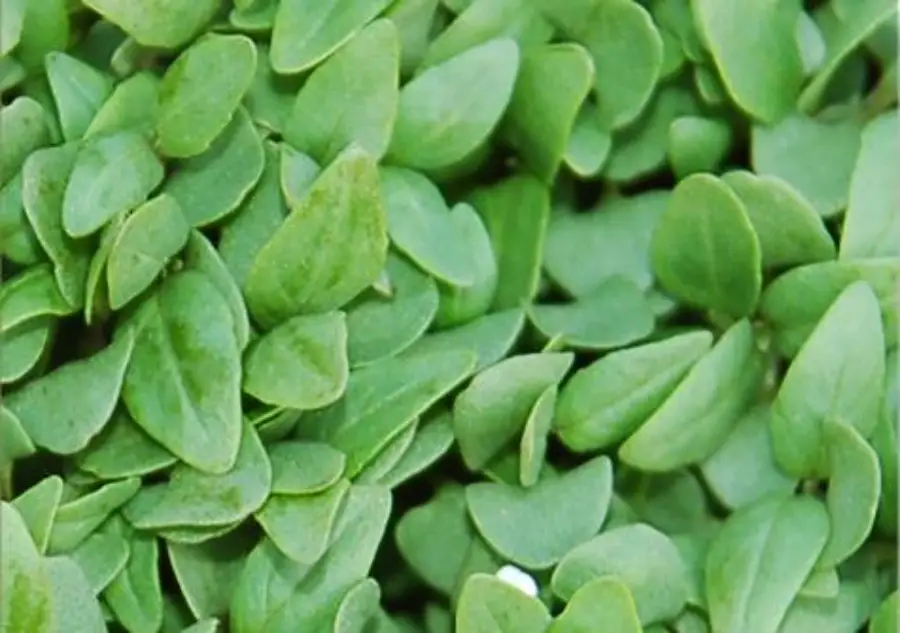
Okay, so let’s dive into the world of these petite powerhouses. Microgreens!
You’ve probably seen them, maybe even tasted their zesty flavors. But what are they, exactly?
Are they just baby plants throwing a garden party on our plates? Or is there more to their story?
Buckle up, my green-loving friend, because we’re about to embark on a fun journey into the universe of microgreens. Ready to get enlightened?
How microgreens are different from sprouts and mature plants
Alright, here’s where things get a tad sciencey, but stick with me!
First off, microgreens and sprouts aren’t the same. It’s like comparing toddlers to teenagers.
Sprouts are the very early shoots of a plant, and they come out to play just days after a seed germinates.
They’re like the newborns of the plant world, and you eat the whole shebang, seed, root, and shoot.
Microgreens, on the other hand, are like the cool teens. They’re given more time to grow (usually 1-3 weeks) and have tiny, tender leaves.
You typically munch on the stems and leaves of microgreens but leave the roots behind.
And those mature plants? They’re full-grown adults, having experienced the ups and downs of plant life.
Examples of common microgreens (e.g., radish, arugula, basil, mustard greens)
Now, let’s talk celebs of the microgreen world! These little dynamos might be small, but they’re mighty in flavor.
First up, we have the radish microgreens. They pack a peppery punch and are known to give salads a spicy kick.
Then there’s arugula, a favorite for many, adding a nutty and peppery taste to the mix.
Basil microgreens? They’re like a burst of summer in your mouth, with a gentle, sweet flavor.
And let’s not forget the bold and fiery mustard greens, always ready to jazz up your dishes.
Each of these micro-stars brings its own unique flair to the table, ready to elevate your meals to gourmet status!
There are many more including sunflowers, peas, and broccoli just to name a few.
Nutritional Value of Microgreens
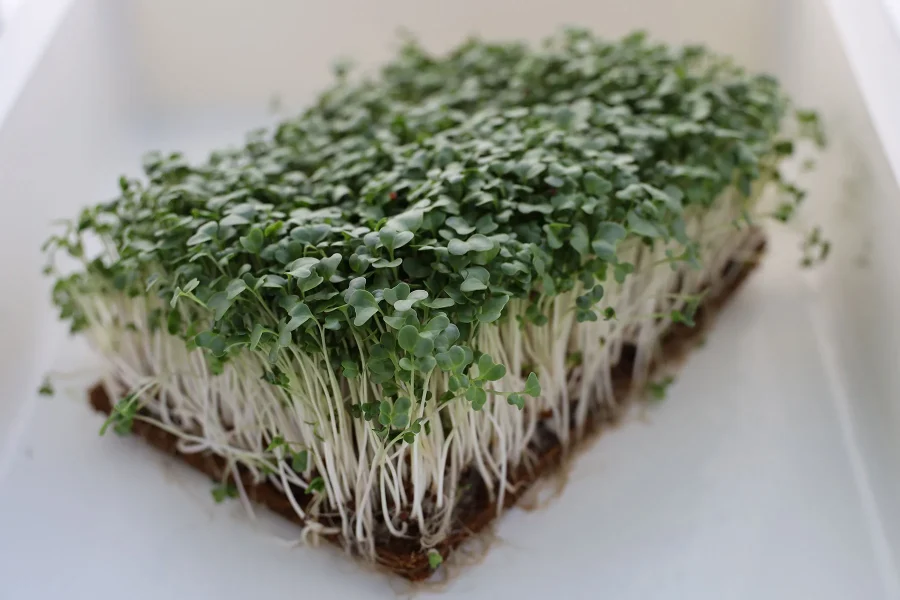
Alright, green enthusiast, let’s chat about the real powerhouse behind those tiny leaves: their nutritional value.
Now, you might be thinking, ‘They’re so tiny, how packed could they possibly be?’ Well, you’re in for a surprise!
It’s like discovering a small, unassuming bookshop and walking in to find it’s chock-full of literary treasures.
Microgreens might be pint-sized, but when it comes to nutrients, they’re like a bursting treasure chest.
So, are you ready to delve into the nutritious world of these mini greens? Let’s uncover their secrets!
Overview of the vitamins, minerals, and antioxidants found in microgreens
Okay, let’s unwrap the nutrition-packed gift that is microgreens.
Picture these tiny greens like nature’s little vitamin capsules, but way tastier.
First off, they’re brimming with vitamins A, C, and E, essentials for glowing skin, a robust immune system, and healthy eyes.
But wait, there’s more! Dive deeper, and you’ll discover a treasure trove of minerals like potassium, iron, and magnesium.
These buddies are crucial for a healthy heart, oxygen-rich blood, and those all-important muscle functions.
And let’s not forget the antioxidants, nature’s own defense squad that wards off those pesky free radicals.
All in all, microgreens are like a compact multi-vitamin supplement, all bundled up in deliciousness.
Comparison of the nutritional content of microgreens vs. their mature counterparts
Now, onto the great face-off: microgreens vs. their grown-up versions.
Imagine a rookie athlete going up against the seasoned pro, only to discover they’ve got just as much if not more, zest and energy!
Research has shown that these petite plants can have up to nine times the nutritional content compared to their mature siblings.
For example, red cabbage microgreens are loaded with vitamin C, even more so than full-grown red cabbage.
Similarly, the teeny shoots of sunflower microgreens can be richer in nutrients than the mature sunflower leaves.
It’s like choosing between a mini dessert bursting with flavor versus a bigger, yet slightly bland one.
Both have their charm, but those micros? They’re sure packing a punch above their weight!
Microgreen Health Benefits
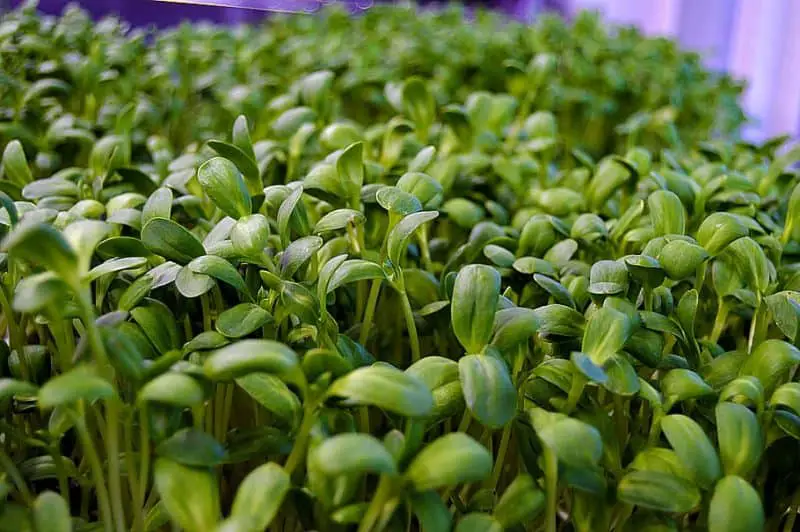
Guess what? We’ve raved about the taste and gushed over the nutrition, and now, we’re diving into perhaps the most exciting chapter: the health benefits!
It’s like finding out your favorite chocolate is actually great for your heart (well, sort of!).
These little greens are not just about garnishing your dishes; they’re here to sprinkle some serious health magic into your life.
So, let’s set off on this enlightening journey and uncover why adding a pinch of microgreens to your plate can be a game-changer for your well-being!
Boosting the immune system
Let’s start with the immune system, our body’s very own security detail. Ever wished there was a ‘boost’ button for it?
Well, microgreens might just be the next best thing! Rich in vitamin C and antioxidants, they’re like the reinforcements your immune system’s been waiting for.
These nutrients act like little soldiers, guarding against infections and ensuring everything’s running smoothly.
So, the next time you’re looking for a little immune pick-me-up, remember these tiny greens have got your back!
Enhancing vision due to high levels of vitamins
Now, let’s talk peepers. Want to keep those eyes sparkling and sharp? Microgreens can lend a hand, or rather, a leaf.
Packed with vitamin A and lutein, they’re a feast for your eyes—literally!
Vitamin A plays a starring role in maintaining good vision, especially when the lights dim, while lutein helps shield your eyes from harmful high-energy light waves.
Think of them as nature’s own pair of stylish sunglasses, keeping your vision clear and protected.
Potentially reducing the risk of chronic diseases
Alright, here’s where microgreens don their superhero capes. Chronic diseases are like those movie villains we all love to hate.
But with their impressive array of antioxidants, microgreens could help tip the scales in our favor.
These antioxidants tackle free radicals, those troublesome molecules that can cause oxidative stress and pave the way for chronic conditions.
By adding these greens to your meals, you’re not just elevating your dishes; you’re also giving your body an edge in the fight against potential health baddies.
Assisting in healthy digestion
Last, but certainly not least, let’s chat tummy talk. Ever felt like your digestive system needed a little nudge?
Well, microgreens are rich in fiber, nature’s very own digestive aid.
Fiber ensures things move along smoothly in your gut, reducing the chances of you feeling like a bloated balloon.
Plus, a happy digestive system means better nutrient absorption.
So, the next time you seek some digestive peace, toss in a handful of microgreens, and let nature do its thing!
Microgreens are packed with nutrients.
While their nutrient contents vary slightly, most varieties tend to be rich in potassium, iron, zinc, magnesium and copper
Microgreens are also a great source of beneficial plant compounds like antioxidants
What’s more, their nutrient content is concentrated, which means that they often contain higher vitamin, mineral and antioxidant levels than the same quantity of mature greens
In fact, research comparing microgreens to more mature greens reports that nutrient levels in microgreens can be up to nine times higher than those found in mature greens
Read more on Healthline
Can You Eat Them Every Day?
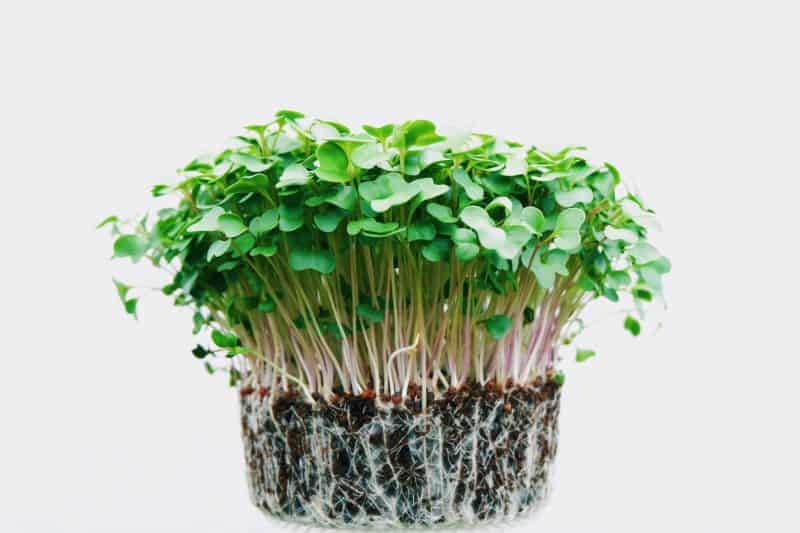
Alright, here’s the million-dollar question: Can you eat microgreens every day?
I mean, with all their flavor and health perks, it’s tempting to sprinkle them on, well, everything!
But is it a green light all the way, or are there things to consider? Strap in, because we’re about to dive deep into the daily microgreens debate.
Whether you’re hoping to make them a meal staple or just curious about the dos and don’ts, we’ve got the answers you’re craving!
Microgreen Pros:
Diving into the world of daily microgreens, it’s like exploring a lush garden full of potential perks.
Sure, these little greens wear their flavor and charm on their sleeves, but is that all they bring to the table when consumed every day?
Spoiler alert: There’s more to these tiny leaves than meets the eye! Let’s break down the benefits one by one.
Nutrient-dense and low in calories
First up, their nutrient profile. Microgreens are like the super-efficient mini laptops of the food world, small, but impressively powerful!
They’re loaded with essential vitamins and minerals, yet they come with a low-calorie tag.
It’s like having a bite-sized treat that’s both delightful and won’t make you count those pesky calories.
So, whether you’re on a health kick or just love munching on something guilt-free, microgreens are a win-win!
Adds variety to meals
Ever felt like you’re stuck in a food rut, rotating the same meals week after week?
Enter microgreens, the culinary confetti that adds pizzazz to your plates!
From sandwiches and salads to omelets and smoothies, these greens can jazz up nearly any dish.
Their vibrant colors and distinct flavors make each meal feel like a gourmet experience.
It’s like giving your taste buds a new adventure every day without leaving your kitchen!
Beneficial for daily vitamin and mineral intake
And let’s not forget the daily nutritional boost. Imagine you have a health meter, and with each sprinkle of microgreens, the bar just keeps going up.
These greens are not just for show; they’re nature’s way of ensuring you’re loading up on your essential daily vitamins and minerals.
Think of them as your daily multivitamin, only fresher and tastier.
With every bite, you’re getting closer to meeting (or even surpassing) your recommended daily intake, making sure your body is fueled and thriving!
Microgreen Cons
Now, as much as we adore our microgreens (and trust me, we do!), it’s essential to peek at the other side of the leaf.
Every silver lining, no matter how shiny, has its cloud.
So, while these greens are a nutritional powerhouse and culinary delight, are there considerations when indulging in them daily?
Let’s delve into the lesser-discussed side of our microgreen story.
The importance of a varied diet
First and foremost, while microgreens are undeniably nutritious, they shouldn’t be the only stars of your food show.
It’s like only watching romantic comedies; as much as you love them, you’d miss out on thrillers, dramas, and mysteries!
A varied diet ensures you get a mix of nutrients from different sources.
Relying heavily on one type, even something as beneficial as microgreens, might make you miss out on other crucial nutrients.
It’s all about balance, variety, and ensuring you get a taste of everything nature has to offer.
Possible risk of overconsuming certain nutrients (though rare)
Remember how we said microgreens are nutrient-dense? Well, there’s a slight catch.
Just as too much of a good thing can be harmful, overdoing it with these greens might mean you’re getting a tad more of certain nutrients than you bargained for.
For instance, consuming them in huge quantities might lead to an excessive intake of vitamin K.
But let’s keep it in perspective; we’re talking about really chowing down on them in large amounts daily. Moderation is the key!
Potential for allergic reactions in some individuals
Here’s a heads-up for the sensitive souls out there. Just as some folks might react to strawberries or peanuts, a few could be allergic to certain microgreens.
It’s rare, but it’s something to be mindful of. If you’re diving into the world of microgreens for the first time, start slow.
Test the waters (or in this case, the greens) and see how your body reacts.
And, if you notice anything unusual, it’s always wise to have a chat with your doctor. They’re the experts, after all!
Tips for Incorporating Microgreens into Daily Diet

Ready to sprinkle some microgreen magic into your daily meals? I get it, after hearing all about their incredible benefits (and a few considerations, of course), who wouldn’t want to?
But if you’re scratching your head, wondering how to slide them effortlessly into your culinary routine, don’t worry!
From breakfast nooks to dinner delights, I’ve got some flavorful tips up my sleeve to make microgreens your everyday go-to.
Let’s embark on this scrumptious journey together, and transform those meals from ordinary to oh-so-extraordinary!
As a fresh salad base
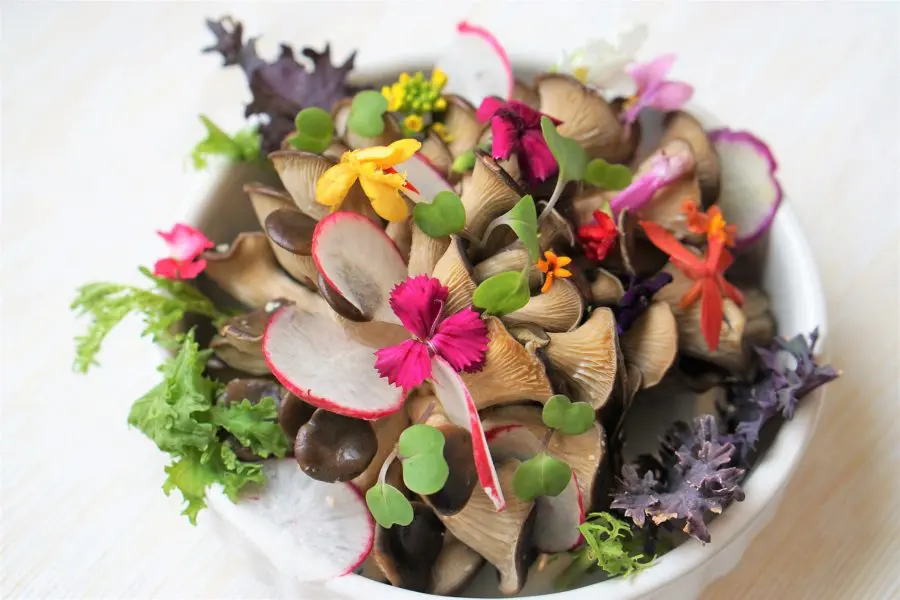
Kickstarting with one of the simplest and yet utterly refreshing ways is using microgreens as a salad base!
Gone are the days when iceberg lettuce was the only green on the block.
Enter microgreens, and suddenly, your bowl is bursting with flavors, colors, and textures you never knew a salad could possess.
Drizzle on your favorite dressing, toss in some crunchy nuts or seeds, maybe a few cherry tomatoes, and voila!
You’ve got a salad that’s not just mouthwatering but nutrient-packed to boot.
Topping for sandwiches, wraps, and burgers
Oh, the humble sandwich. But wait, add microgreens, and it’s not so humble anymore!
Imagine biting into a sandwich or wrap with a layer of fresh, peppery arugula microgreens or the zesty kick of radish ones.
And for all you burger enthusiasts, a handful of these greens can elevate your patty game to gourmet levels.
It’s all about adding that extra layer of flavor and crunch, making each bite a delightful surprise.
Garnish for soups and pastas
Let’s move to something warm and comforting like soups and pastas.
You know that final touch chefs add to their dishes, that little flourish that screams ‘fancy’? That can be you with microgreens!
A sprinkle atop a creamy soup or a bed of spaghetti, and suddenly, your meal looks (and tastes) like it’s straight out of a high-end restaurant.
Plus, the contrast of warm soup or pasta with the cool, fresh greens? Absolutely divine!
Blended into smoothies or juices
Early risers, this one’s for you. Dive into your day with a blast of nutrients by tossing a handful of microgreens into your morning smoothie or juice.
Whether you’re a green smoothie aficionado or a berry blend lover, these tiny leaves will seamlessly integrate, boosting not just the color but the nutrient profile.
It’s like having a secret health ingredient, only it’s not so secret anymore!
Incorporated into omelets or scrambles
And speaking of mornings, how about jazzing up your egg game?
A fluffy omelet or a hearty scramble gets even better with a sprinkle of microgreens.
The tender crunch, the burst of flavor and it’s like your eggs just got a gourmet makeover!
And if you’re looking to impress during a weekend brunch, a sprinkle of these greens on top, and you’ve got a dish that looks as delightful as it tastes.
Eggs and microgreens are a match made in culinary heaven!
Growing Your Own Microgreens
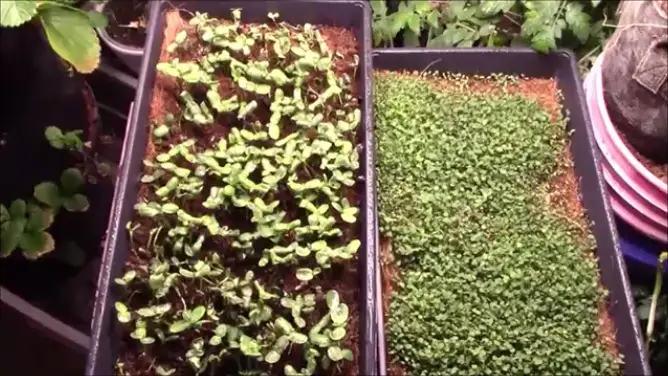
Ever gazed at those lush microgreens and thought, ‘Hey, maybe I could grow these little wonders myself’?
Well, guess what? You absolutely can! Growing microgreens isn’t some mystical art reserved for those with a green thumb.
With a pinch of enthusiasm and a sprinkle of patience, you can cultivate your very own microgreen haven.
Whether you have a sprawling garden or just a sunny windowsill, get ready to dive into the delightful world of planting, nurturing, and of course, harvesting these green gems.
So, let’s roll up our sleeves and embark on this green-thumb adventure together!
Benefits of home cultivation (e.g., cost-effective, ensures freshness)
Alright, let’s start with the big ‘why.’ Why grow microgreens at home?
First up, it’s surprisingly cost-effective. Think of it as a small investment with sprouting returns.
Buying microgreens can sometimes put a dent in your wallet, especially if you’re munching on them daily.
But when you grow them yourself, you’ve got a continuous supply at a fraction of the cost.
It’s like having a gourmet store in your backyard or kitchen!
And freshness? Oh, let me tell you, there’s an unmatched joy in plucking greens and adding them straight to your plate.
Store-bought varieties, while great, might’ve been off their plant for days. But yours?
They’re as fresh as dawn. This not only means they taste better but often pack more nutrients too.
Basic steps and equipment needed for starting a microgreen garden
Okay, now for the nitty-gritty: how do you turn that green dream into reality? Fear not; it’s simpler than you think!
Containers: You don’t need fancy pots to start. Shallow trays, even repurposed takeaway containers with a few holes punched in the bottom for drainage, will do the trick.
Soil: A good-quality potting mix is your best bet. Ensure it’s fine-grained, so the delicate microgreen roots can easily navigate.
I recommend using coco coir for germinating your microgreen seeds.
Seeds: Ah, the heroes of our story! Choose your desired microgreen seeds, like radish, arugula, or mustard.
You want to use organic and non-GMO seeds for sprouting your microgreens.
There are specialized microgreen seed packets available that can offer a variety.
Planting: Spread the soil in your container, sprinkle the seeds, and cover them with a thin layer of soil.
Mist it lightly with water. They’re not too fussy; just give them a comfy bed to grow in!
Light and Water: Place your container in a sunny spot. If sunlight is scarce, a grow light will do.
Remember to keep the soil moist but not waterlogged. A spray bottle is a great tool to ensure gentle watering.
Harvesting: In a few weeks, with a little TLC, you’ll see your greens ready to be snipped!
Use scissors to harvest, and voilà, your homegrown microgreens are ready to dazzle your dishes.
Starting a microgreen garden might seem like a step into the unknown, but with these basics in place, you’ll soon find it’s a journey filled with delightful discoveries and delicious rewards!
Eating Microgreens FAQs
Microgreens have become a popular choice for many health-conscious consumers.
These miniature plants pack a powerful nutritional punch and are often used in a variety of dishes, from salads to smoothies.
While microgreens are beneficial, you might wonder how much is too much, or whether they can be a staple in your daily diet.
Let’s delve into some of the most frequently asked questions about eating microgreens.
Q: Is it okay to eat microgreens every day?
A: Yes, it’s generally okay to eat microgreens every day. They are rich in vitamins and nutrients and can be a healthy addition to a balanced diet.
Q: How many microgreens should I eat daily?
A: There’s no specific quantity recommendation, but a handful or two added to meals should suffice for most people. Always consult a healthcare provider for personalized dietary advice.
Q: Can you live off microgreens?
A: While microgreens are nutrient-dense, they shouldn’t be your only source of food. A balanced diet that includes a variety of foods is essential for comprehensive nutrition.
Q: Are microgreens actually healthy?
A: Yes, microgreens are rich in vitamins, minerals, and antioxidants. They can be a very healthy addition to your diet.
Q: Can you eat too much microgreens?
A: Like any food, it’s possible to eat too much of a good thing. Always adhere to a balanced diet and consult a healthcare provider if you have specific health concerns.
Q: Are microgreens healthier than salad?
A: Microgreens are generally more nutrient-dense than fully matured salad greens, but both have their own sets of nutrients and benefits. It’s good to include a variety in your diet for balanced nutrition.
Eating Microgreens Every Day Conclusion

Whew, what a green-filled journey we’ve had together! From understanding the very essence of microgreens to sowing our own little garden, it’s been quite the adventure, hasn’t it?
These tiny greens surely pack a punch, both in flavor and benefits.
But beyond all the nutritional facts and gardening tips, it’s about the joy of discovering new flavors, the pride in growing something with your own hands, and the simple pleasures of a fresh, healthy meal.
So, as we wrap up, remember to sprinkle a little green in your life, be it on your plate or in a pot by the window. Here’s to many more microgreen moments in our lives!
Recap on the feasibility and benefits of consuming microgreens daily
So, we’ve come quite a way on our microgreen journey, haven’t we?
And if there’s one thing we’ve discovered, it’s that indulging in these vibrant greens daily is not just feasible, but oh-so-rewarding.
Remember those awesome perks? The nutrient density, the dash of variety they bring to our plates, and of course, the way they make our meals pop with color and flavor.
Not to forget, the sheer joy of knowing you’re giving your body a daily dose of the good stuff, without overdoing it.
It’s almost like nature crafted them keeping our daily culinary and health needs in mind!
Try incorporating microgreens into daily meals for enhanced health benefits
Now, if you’ve been teetering on the edge, wondering whether to introduce these little wonders to your daily meals, here’s a nudge: Dive right in!
Just imagine, with a sprinkle here and a handful there, you’re not just enhancing the taste of your dishes, but you’re also ramping up their nutritional value.
Give growing your own microgreens at home a try.
And whether you’re a seasoned chef or someone whose culinary expertise stops at toast (hey, no judgment!), microgreens are a delightfully easy way to elevate your food game.
So, give them a try, let them weave their magic into your meals, and relish the symphony of flavors and health benefits they bring. Bon appétit!



